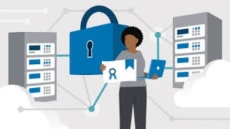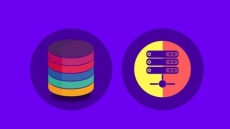What you’ll learn
-
Understand the fundamental concepts of Software Defined Radio and signal processing.
-
Install and use GNU Radio to create and analyze flowgraphs without requiring hardware.
-
Build and configure an AM receiver and explore advanced radio concepts such as frequency shifting and demodulation.
-
Work with real SDR hardware, including RTL-SDR and HackRF, and use tools like SDR++ for practical applications. Learn Software Defined Radio (SDR) basics
-
Fundamentals of Radio and Signal Theory: Grasp the basic concepts of radio waves and signal propagation.
-
Modulation Techniques: Understand how information is encoded onto carrier waves using various modulation methods.
-
Digital vs. Analog Signals: Differentiate between digital and analog signals and their respective applications.
-
Installing GNU Radio: Learn to set up GNU Radio on Linux, Windows, or macOS platforms.
-
GNU Radio Workspace Navigation: Become proficient in navigating the GNU Radio interface and utilizing its components.
-
Working with Sources and Sinks: Understand the roles of sources and sinks in signal processing within GNU Radio.
-
Designing Flowgraphs: Develop skills to create and manage flowgraphs for signal processing tasks.
-
Manipulating Signal Properties: Learn to adjust signal properties and apply multipliers effectively.
-
Building an AM Receiver: Construct and configure an Amplitude Modulation (AM) receiver using GNU Radio.
-
Implementing QT GUI Elements: Add and configure QT graphical user interface components in your projects.
-
Simulating Real Radio Signals: Use recorded file sources to emulate real-world radio signals for testing and analysis.
-
Frequency Analysis: Create and interpret frequency spectra for various signals.
-
Exploring Sinusoidal Frequencies: Examine the characteristics and applications of sinusoidal waveforms.
-
Applying Fast Fourier Transform (FFT): Utilize FFT for signal analysis and understand its practical applications.
-
Combining Complex Signals: Learn techniques for merging complex signals in signal processing tasks.
-
Processing Real-World Audio: Work with actual audio signals to apply processing techniques.
-
Understanding Signal Gain: Comprehend how gain affects audio and radio signals and how to control it.
-
Decibel Theory: Understand the decibel scale and its relevance in signal processing.
-
Introduction to Filters: Learn about different types of filters and their applications in signal processing.
-
Designing Equalizers: Create equalizers and observe the effects of varying sample rates on sound quality.
-
Advanced AM Receiver Concepts: Delve deeper into the workings of AM receivers and essential radio concepts.
-
Radio Tuning Theory: Understand the theoretical aspects of tuning radios to specific frequencies.
-
Frequency Shifting Techniques: Learn how frequency shifting is implemented and its significance.
-
Signal Processing in Computers: Discover how computers interpret and process radio signals.
-
RF Tuning Implementation: Develop and understand radio frequency tuning within SDR systems.
-
AM Demodulation: Master the process of demodulating AM signals to retrieve transmitted information.
-
Decimation in Signal Processing: Understand decimation and its role in reducing sample rates.
-
Utilizing the Throttle Block: Learn the purpose of the throttle block in GNU Radio and its practical applications.
-
Introduction to RTL-SDR: Explore the RTL-SDR hardware and its capabilities in SDR applications.
-
Comparing SDR Hardware: Evaluate different SDR hardware options, such as HackRF and RTL-SDR models, to make informed choices.
How to Enroll Mastering Software Defined Radio (SDR): GNU Radio and SDR++ course?
How many members can access this course with a coupon?
Mastering Software Defined Radio (SDR): GNU Radio and SDR++ Course coupon is limited to the first 1,000 enrollments. Click 'Enroll Now' to secure your spot and dive into this course on Udemy before it reaches its enrollment limits!








